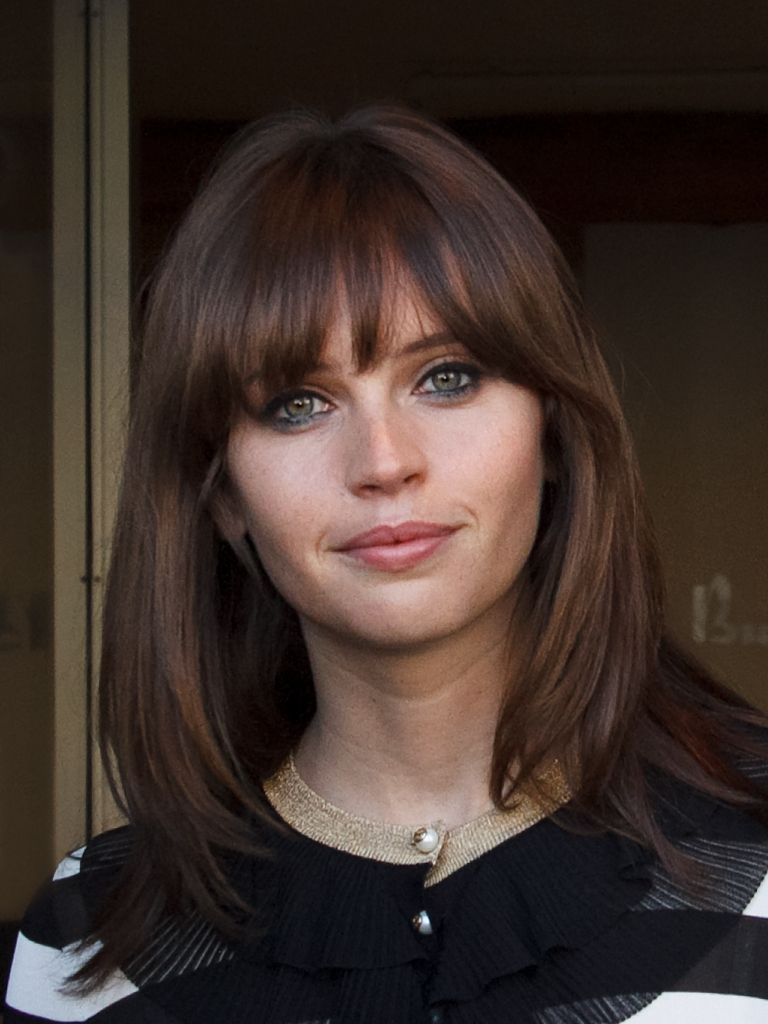In the vast, ever-shifting firmament of Hollywood, few stars burn as brightly or as enduringly as Harrison Ford. Across seven decades, he has not merely appeared in films; he has sculpted cinematic history, becoming a figure synonymous with adventure, stoicism, and a certain laconic charm that has captivated audiences worldwide. His journey, however, was far from a predestined ascent, marked instead by unforeseen turns, self-discovery, and the persistent pursuit of craft over mere celebrity.
From the blue-collar heartland of Chicago to the dizzying heights of global stardom, Ford’s trajectory is a compelling narrative of an actor who, by his own admission, stumbled into greatness. Before he donned the fedora of Indiana Jones or the blaster of Han Solo, he was a carpenter, a pragmatic artist building sets and furniture, quietly honing a resilience that would serve him well in the capricious world of cinema. It’s this intriguing blend of the grounded and the legendary that defines his unique appeal.
This in-depth exploration invites us to delve into the formative experiences and pivotal moments that forged Harrison Ford, the accidental star. We will trace his path from a shy college student to a reluctant Hollywood newcomer, uncovering the behind-the-scenes stories of how he landed the roles that would change his life and cinema forever, and how he masterfully navigated the demands of blockbuster franchises while also carving out a reputation as a serious dramatic actor.
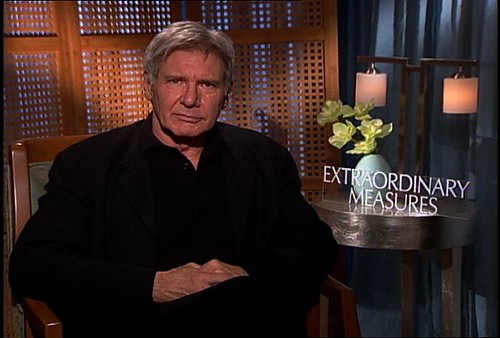
1. **Early Life and the Unconventional Path to Acting**
Harrison Ford, a name now synonymous with legendary cinematic figures, was born on July 13, 1942, in Chicago, Illinois. His parents, Dorothy (née Nidelman), a former radio actress, and John William “Christopher” Ford, an advertising executive and former actor, provided an upbringing that, while perhaps not directly pointing to Hollywood stardom, certainly instilled a unique perspective. His younger brother, Terence, arrived in 1945, completing a family dynamic that would shape his early years.
When questioned about the religious upbringing he and his brother received, Ford, with characteristic wit, once quipped “Democrat,” before more seriously clarifying that they were raised to be “liberals of every stripe.” This early exposure to progressive thought undoubtedly influenced his later activism and political stances. Further reflecting on his heritage, he famously mused on his Jewish and Irish Catholic ancestry, stating, “As a man I’ve always felt Irish, as an actor I’ve always felt Jewish,” a remark that offers a glimpse into his self-perceived duality and perhaps his approach to performance.
His youth was marked by a commitment to the Boy Scouts, where he achieved the impressive rank of Life Scout. His duties at Napowan Adventure Base Scout Camp included serving as a counselor for the Reptile Study merit badge, an experience that would later playfully influence the depiction of a young Indiana Jones as a Life Scout in *Indiana Jones and the Last Crusade*. Academically, Ford graduated from Maine East High School in Park Ridge, Illinois, in 1960, where his voice was notably the first student voice broadcast on the school’s new radio station, WMTH, and he held the role of its first sportscaster during his senior year.
His collegiate journey led him to Ripon College in Wisconsin, where he pursued a philosophy major and joined the Sigma Nu fraternity. A self-described “late bloomer,” Ford’s foray into acting was almost an afterthought, a drama class taken in the final quarter of his senior year purely to overcome his shyness. Yet, this seemingly minor decision sparked a profound fascination, setting him on an unforeseen course. Despite this nascent passion, his academic career at Ripon ended abruptly when he was expelled for plagiarism a mere four days before graduation, a colorful anecdote in the tapestry of his unconventional beginnings.
Read more about: Navigating Destiny: 6 Actors Whose Chosen Roles Defined Their Hollywood Journeys
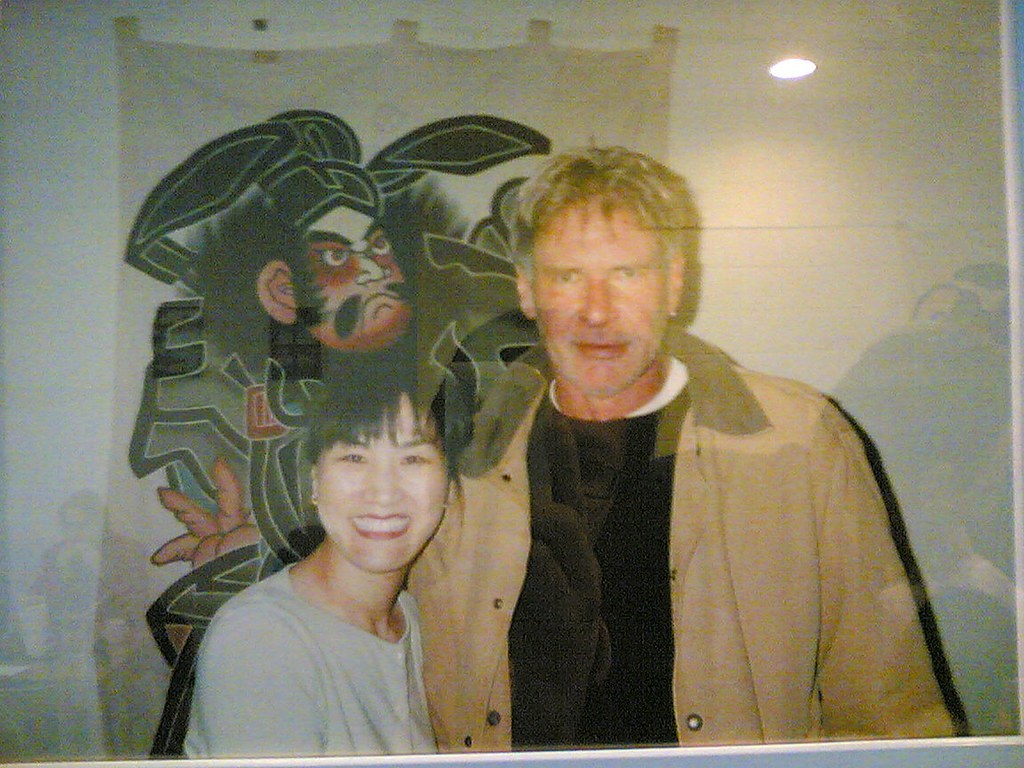
2. **The “Accidental” Carpenter: A Detour Before Stardom**
After his departure from college and a season of summer stock with the Belfry Players in Wisconsin in 1964, Ford made the ambitious move to Los Angeles, hoping to break into the film industry. He eventually secured a contract with Columbia Pictures’ new talent program, leading to his first recorded screen appearance as an uncredited bellhop in *Dead Heat on a Merry-Go-Round* (1966). However, his initial forays into acting were fraught with challenges, marked by minor roles and a position at the bottom of the studio’s hiring list, exacerbated by an incident where he reportedly offended producer Jerry Tokofsky.
An anecdote from this period vividly illustrates Ford’s burgeoning, unyielding spirit. When Tokofsky allegedly suggested that he could tell actor Tony Curtis was a movie star when he delivered groceries, unlike Ford, who wasn’t, Ford famously retorted that if Curtis were truly talented, he would have delivered them like a bellhop. This defiance, while perhaps costing him his job soon after, underscored a nascent conviction in his craft that would later define his performances, even as he was still struggling for recognition. He received his first credit as “Harrison J. Ford” in the 1967 Western film *A Time for Killing*, the “J” added to distinguish him from an earlier silent film actor of the same name, a detail he later humorously discovered upon encountering a star with his name on the Hollywood Walk of Fame.
Dissatisfied with the quality and quantity of roles being offered, Ford made a pivotal decision that would become a celebrated part of his legend: he became a self-taught professional carpenter. This period was not a retreat from ambition but a pragmatic necessity to support his then-wife and two young sons. He honed a skilled trade, building and renovating, with clients who included notable literary figures like writers Joan Didion and John Gregory Dunne, with whom he and his wife forged a friendship. This hands-on experience in carpentry, detailed in the documentary *Joan Didion: The Center Will Not Hold*, provided a vital, grounding interlude, allowing him to maintain his independence and provide for his family while awaiting a more fulfilling artistic opportunity.
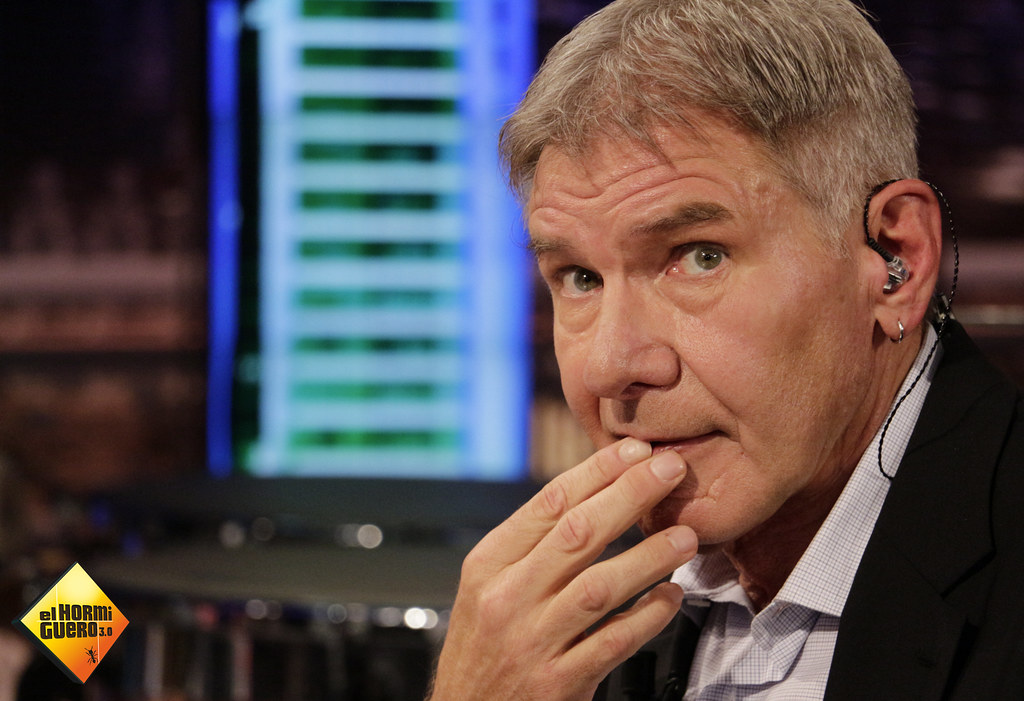
3. **The Fateful Meeting: George Lucas and *American Graffiti***
The turning point in Harrison Ford’s nascent career began to coalesce through a series of fortunate connections. Despite his frustrations with the acting roles presented to him, a crucial advocate emerged in the form of casting director and burgeoning producer Fred Roos. It was Roos who recognized Ford’s potential and championed the young actor, ultimately securing him an audition that would forever alter his trajectory.
This audition was for a new film by an emerging director named George Lucas, titled *American Graffiti* (1973). Ford landed the role of Bob Falfa, a character whose presence, though relatively brief, showcased a compelling blend of intensity and effortless cool. This collaboration with Lucas was far more than just another acting job; it planted the seeds of a professional relationship that would blossom into one of the most significant partnerships in cinematic history, profoundly shaping Ford’s future career.
The success of Francis Ford Coppola’s *The Godfather* further benefited Ford, albeit indirectly. Coppola, empowered by the monumental achievement of his film, hired Ford to assist in expanding his office. This arrangement provided Ford with continued exposure to the industry’s inner workings and, more importantly, led to small but memorable roles in Coppola’s subsequent projects. He appeared in *The Conversation* (1974), a gripping thriller, and later in the epic *Apocalypse Now* (1979), where he played an army colonel strikingly named “G. Lucas,” a nod to his growing network and the tight-knit circle of filmmakers who were redefining Hollywood.
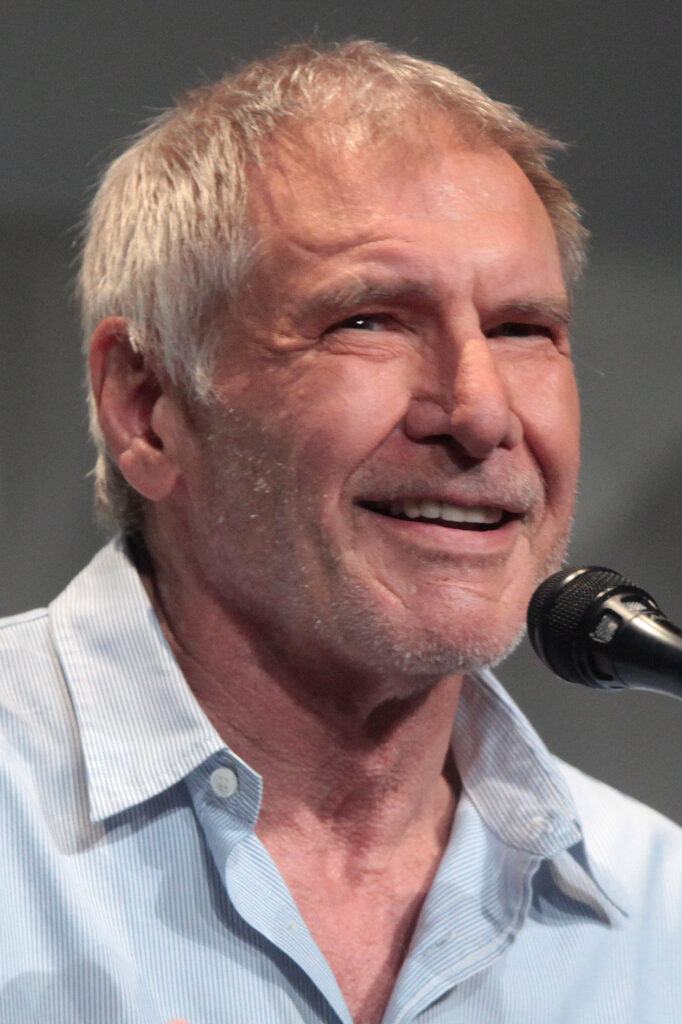
4. **Ignition: Han Solo and the Birth of a Star**
The groundwork laid during *American Graffiti* proved invaluable when George Lucas embarked on his next ambitious project, an epic space opera titled *Star Wars*. Initially, Lucas hired Ford not to star, but to read lines opposite actors auditioning for various roles. It was during these line reads, where Ford imbued the dialogue with his distinct delivery and personality, that Lucas was unexpectedly “won over” by his performance. This organic, unpressured demonstration of his talent led to the fateful decision: Harrison Ford was cast as the roguish smuggler, Han Solo.
*Star Wars* (1977) was nothing short of a cultural phenomenon, quickly becoming “one of the most successful and groundbreaking films of all time.” The film’s unprecedented success catapulted Ford, along with his co-stars Mark Hamill and Carrie Fisher, to “widespread recognition” and instant global stardom. Han Solo, with his quick wit, cynical charm, and underlying heroism, became an indelible character, defining a new archetype for the cinematic hero and etching Ford’s face into the collective consciousness of millions.
With his newfound celebrity, Ford began securing more substantial roles throughout the late 1970s, appearing in films such as *Heroes* (1977), *Force 10 from Navarone* (1978), and *Hanover Street* (1979). He also showcased his versatility in the buddy-comedy western *The Frisco Kid* (1979), co-starring with Gene Wilder and playing a bank robber with a surprising “heart of gold.” His iconic turn as Han Solo, however, remained central to his burgeoning career, leading him to reprise the role in the hugely successful sequels *The Empire Strikes Back* (1980) and *Return of the Jedi* (1983), as well as the notorious *Star Wars Holiday Special* (1978). Interestingly, Ford had expressed a desire for Lucas to kill off Han Solo at the end of *Return of the Jedi*, believing it “would have given the whole film a bottom,” a suggestion Lucas ultimately declined.
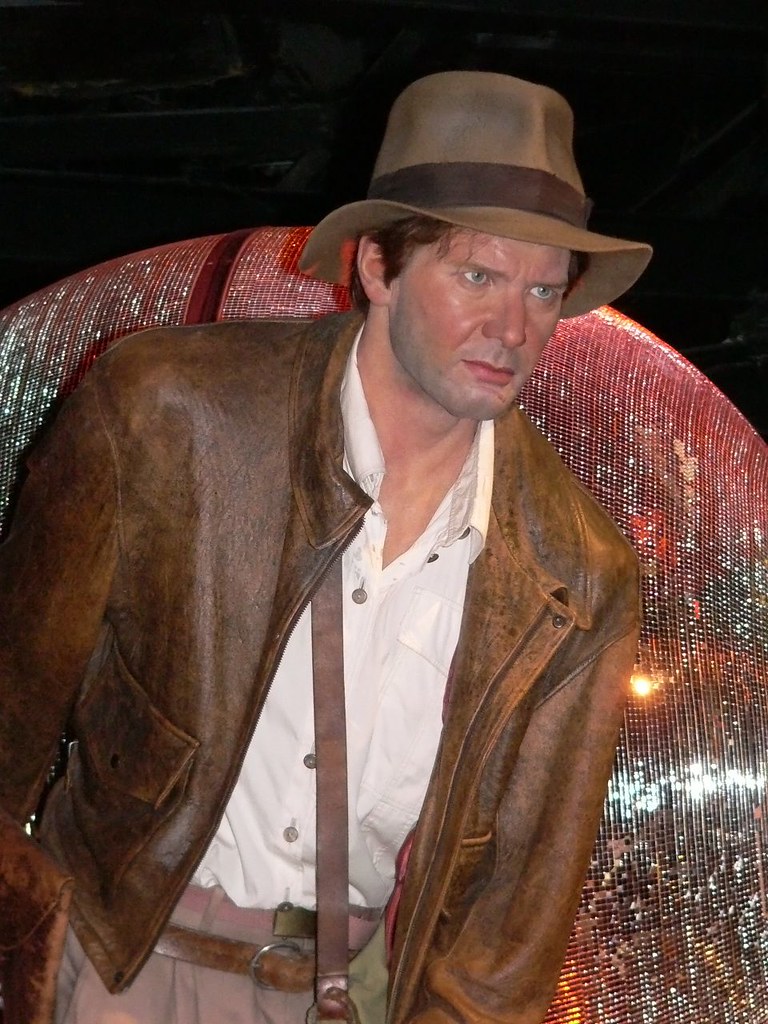
5. **The Adventurer’s Persona: Crafting Indiana Jones**
Even as Han Solo cemented his status as a beloved sci-fi icon, Harrison Ford’s ascent to leading man was further solidified with the release of *Raiders of the Lost Ark* (1981). This action-adventure masterpiece, a collaborative brainchild of George Lucas and Steven Spielberg, gifted Ford his second indelible franchise role: the whip-cracking, globe-trotting archaeologist, Indiana Jones. Much like *Star Wars*, the film achieved massive success, instantly becoming the highest-grossing film of the year and establishing Ford as the quintessential adventure hero.
Intriguingly, the casting of Ford as Indiana Jones was not a foregone conclusion. According to Howard Kazanjian’s book *A Producer’s Life*, both Spielberg and Lucas initially harbored reservations. Lucas, in particular, was hesitant due to having already worked with Ford on both *American Graffiti* and *Star Wars*, fearing typecasting or an over-reliance on the actor. However, fate intervened when Tom Selleck, the initial choice for the role, was unable to accept due to other commitments. Lucas eventually “relented,” and Spielberg, having seen Ford’s powerful performance in *The Empire Strikes Back*, became convinced.
Ford fully embraced the physicality and intellectual curiosity of the character, reprising the role throughout the decade in the prequel *Indiana Jones and the Temple of Doom* (1984) and the sequel *Indiana Jones and the Last Crusade* (1989). These films not only enriched his filmography but also added to his legend through the demands of the role. During the filming of *Temple of Doom* in London in June 1983, Ford suffered a serious injury, herniating a disc in his back. The 40-year-old actor was forced to fly back to Los Angeles for surgery, yet, with remarkable resilience, he returned to the set just six weeks later to complete the production, embodying the grit of his adventurous alter ego.
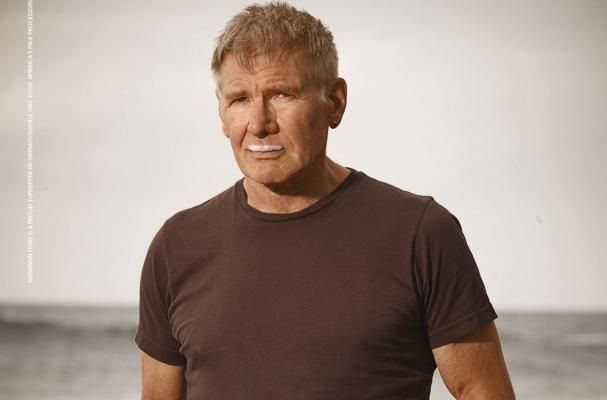
6. **Beyond Typecasting: Rick Deckard and Dramatic Depths**
Following his runaway success as Indiana Jones, Harrison Ford took on a role that would challenge audience perceptions and cement his versatility: Rick Deckard in Ridley Scott’s dystopian science-fiction masterpiece, *Blade Runner* (1982). This film, vastly different in tone and scope from his previous blockbusters, presented Ford with a more complex, morally ambiguous character. Compared to his experiences on the *Star Wars* and *Indiana Jones* films, Ford found the production of *Blade Runner* particularly arduous, recalling to *Vanity Fair*, “It was a long slog. I didn’t really find it that physically difficult—I thought it was mentally difficult.” His struggles were compounded by differing views with Scott on the very nature of his character, a creative tension that famously persisted for decades.
While *Blade Runner* was not an immediate commercial success upon its initial release, its critical appreciation grew over time, transforming it into a definitive cult classic and “one of Ford’s most highly regarded films.” His nuanced portrayal of Deckard, a retired “blade runner” tasked with hunting down rogue replicants, showcased a profound depth that moved beyond the clear-cut heroism of Han Solo or Indiana Jones, proving his capacity for darker, more introspective roles.
The 1980s further solidified Ford’s range as he masterfully pivoted between genres. He delivered critically acclaimed dramatic performances in films such as *Witness* (1985), which earned him his sole Academy Award nomination for Best Actor, and *The Mosquito Coast* (1986). These roles allowed him to deeply “explore his potential as a dramatic actor,” with both performances being “widely acclaimed” for their intensity and sincerity. He also ventured into romantic leads, charming audiences opposite Melanie Griffith and Sigourney Weaver in the comedy-drama *Working Girl* (1988), and tackling the psychological thriller *Frantic* (1988). Ford himself later reflected that working with director Peter Weir on *Witness* and *The Mosquito Coast* were among the “best experiences of his career,” underscoring his artistic satisfaction in these challenging roles.
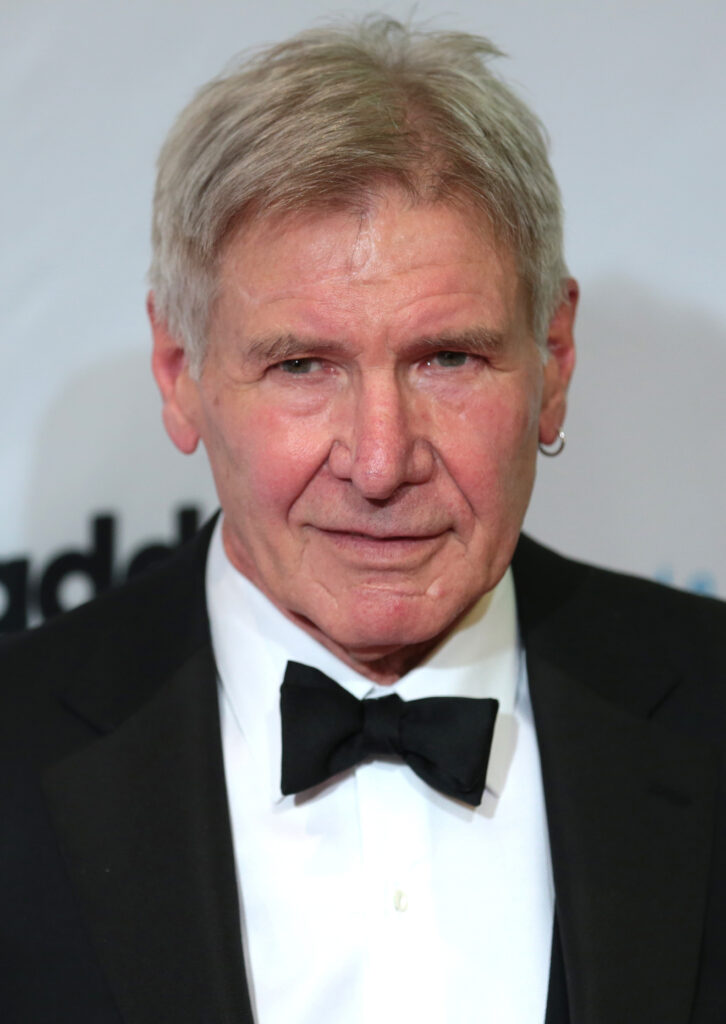
7. **The Reign of the Action Hero: Dominating the Box Office**
By the early 1990s, Harrison Ford had firmly established himself as one of Hollywood’s most bankable stars and a premier action hero, a reputation he continued to reinforce with a string of highly successful films. He stepped into another iconic franchise, portraying the CIA analyst Jack Ryan in *Patriot Games* (1992) and *Clear and Present Danger* (1994), both co-starring Anne Archer and James Earl Jones. Ford took over the role from Alec Baldwin, who had played Ryan in *The Hunt for Red October*, a transition that famously led to “long-lasting resentment” from Baldwin, who claimed Ford had negotiated with Paramount behind his back.
Ford continued to dominate the action-thriller genre throughout the decade, delivering powerful performances that resonated with audiences worldwide. His role in *The Fugitive* (1993), co-starring Tommy Lee Jones, garnered “some of the best reviews of his career.” Esteemed critic Roger Ebert notably praised Ford, concluding that, “Ford is once again the great modern movie everyman. As an actor, nothing he does seems merely for show, and in the face of this melodramatic material he deliberately plays down, lays low, gets on with business instead of trying to exploit the drama in meaningless acting flourishes.” He further commanded the screen in high-octane thrillers like *The Devil’s Own* (1997) and the iconic presidential action film *Air Force One* (1997).
Beyond the explosive action, Ford also demonstrated his range in more straight dramatic roles with films like *Presumed Innocent* (1990) and *Regarding Henry* (1991), and returned to romantic lead territory in *Sabrina* (1995), a remake of the classic 1954 film. This period marked a significant phase in his career, as he cultivated strong working relationships with an array of well-regarded directors, including Peter Weir, Alan J. Pakula, Mike Nichols, Phillip Noyce, and Sydney Pollack, collaborating with several of them twice. This era, spanning from 1977 to 1997, proved to be “the most lucrative period of Ford’s career,” with him appearing in 14 films that landed in the top 15 of yearly domestic box-office rankings, 12 of which reached the top ten. Furthermore, six of these films—*Star Wars*, *Apocalypse Now*, *Raiders of the Lost Ark*, *Witness*, *Working Girl*, and *The Fugitive*—received nominations for the Academy Award for Best Picture, solidifying his stature as both a commercial powerhouse and a respected artistic force in Hollywood.
Read more about: From Tweets to Tirades: 13 Celebrities Who Absolutely Tanked Their Own Careers
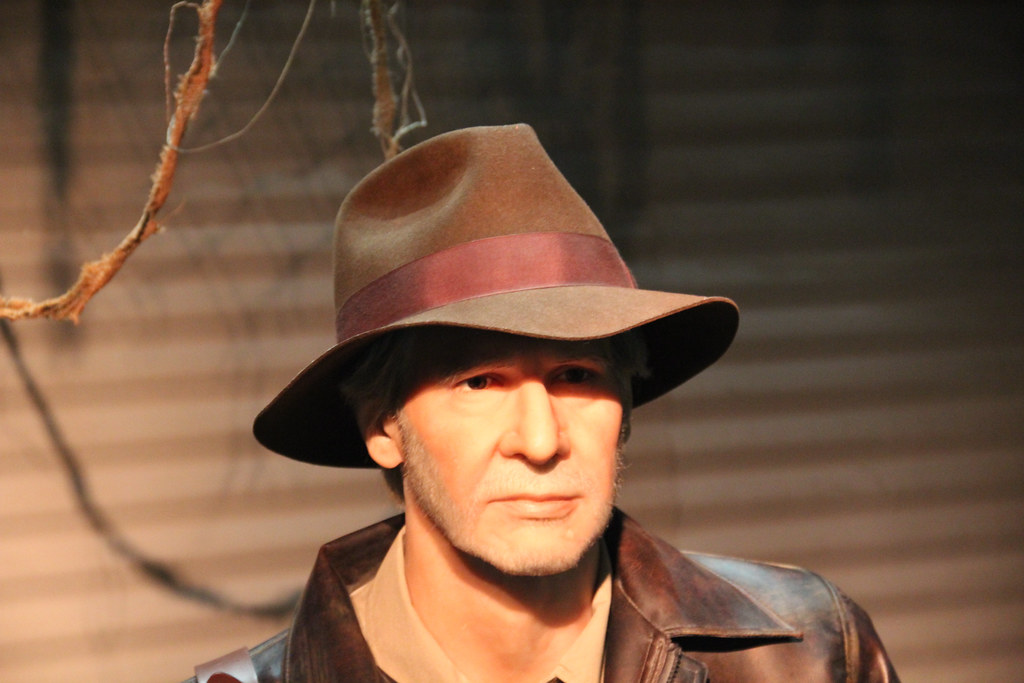
8. **The Post-Millennium Career: Navigating New Horizons (1998-2014)**
As Hollywood entered a new millennium, Harrison Ford, a titan of the silver screen, found himself navigating a period of varied commercial and critical reception. Following the incredibly lucrative two decades that cemented his status as a leading man, the late 1990s and early 2000s saw him appear in a series of films such as *Six Days, Seven Nights* (1998), *Random Hearts* (1999), and *K-19: The Widowmaker* (2002), which, while often ambitious, struggled to match the monumental success of his earlier blockbusters. He also took on executive producer roles during this time, notably for *K-19: The Widowmaker* and *Extraordinary Measures*, both based on true events, signaling a deeper involvement in the filmmaking process.
Yet, this period was not without its notable exceptions and thoughtful career choices. *What Lies Beneath* (2000) proved to be a significant commercial success, grossing over $155 million in the United States and $291 million worldwide, demonstrating his enduring appeal. Ford also exhibited a discerning approach to his projects, famously declining a role in the thriller *Syriana* (2004), a decision he later reflected on, commenting, “I didn’t feel strongly enough about the truth of the material and I think I made a mistake.” This role ultimately earned George Clooney an Oscar and a Golden Globe, highlighting the paths not taken in a career defined by singular choices.
In 2008, Ford delivered a much-anticipated return to one of his most beloved characters, donning the fedora once more for *Indiana Jones and the Kingdom of the Crystal Skull*. This revival, the first Indiana Jones film in 19 years and another collaboration with Lucas and Spielberg, was a resounding success, becoming the second-highest-grossing film worldwide that year. Ford, ever the adventurer, expressed a willingness for another sequel, quipping, “if it didn’t take another 20 years to digest,” hinting at his continued connection to the iconic archaeologist.
His artistic journey through the early 2010s saw him explore diverse roles, from a Special Agent in *Crossing Over* (2008) to a critically lauded performance in *Morning Glory* (2010), which some critics hailed as his best role in years despite the film’s box office disappointment. In 2011, he ventured into the unique genre blend of science-fiction and western with *Cowboys & Aliens*, famously appearing at San Diego Comic-Con and expressing genuine surprise at the warm reception, stating, “I just wanted to make a living as an actor. I didn’t know about this.”
From 2013 onwards, Ford embraced a trend of accepting more diverse supporting roles, showcasing his adaptability. This included turns in the corporate espionage thriller *Paranoia*, the sci-fi epic *Ender’s Game*, and the acclaimed biopic *42*, where his portrayal of baseball owner Branch Rickey garnered significant praise and a Satellite Awards nomination. His dedication to the role was exemplary, involving a fat suit, prosthetics, and extensive research to master Rickey’s distinctive voice and mannerisms. Ford proudly stated, “I loved the language of the guy, I loved his style,” later citing Rickey as one of the roles he is most proud of. This period also saw him in *Anchorman 2: The Legend Continues*, *The Expendables 3*, and co-starring with Blake Lively in the romantic drama *The Age of Adaline* (2015) to positive reviews.
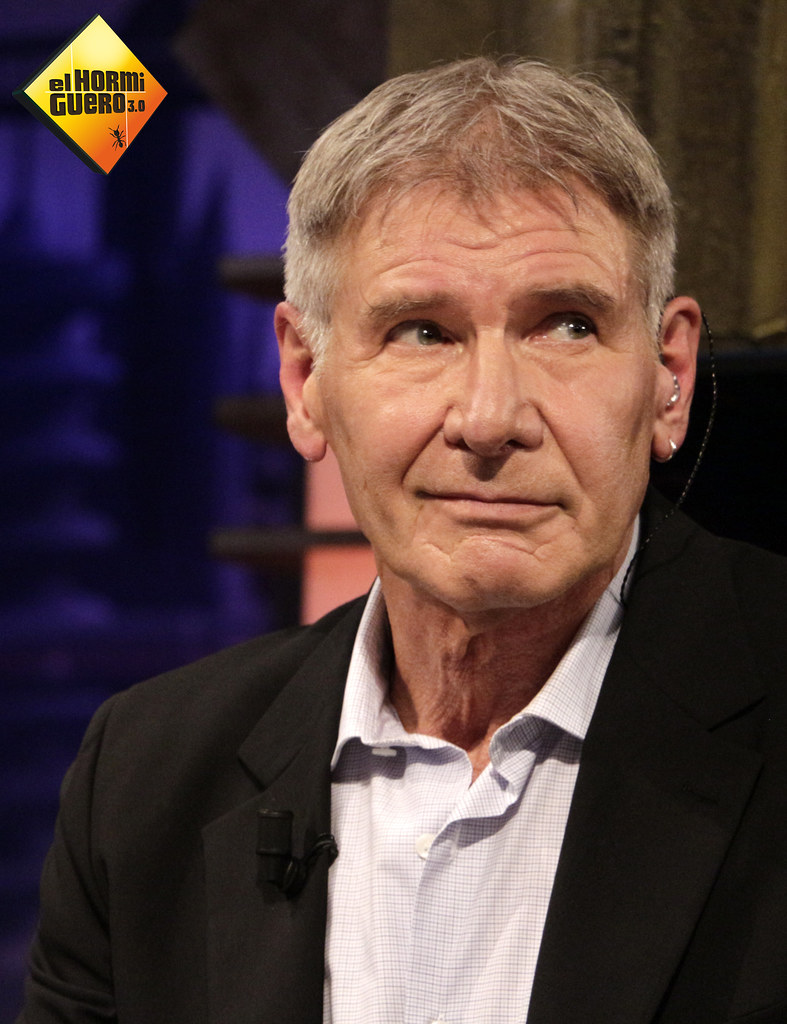
9. **Return to the Classics: Star Wars and Blade Runner Revivals (Since 2015)**
The latter half of the 2010s marked a thrilling period for fans of Harrison Ford, as he reprised two of his most iconic roles, breathing new life into beloved cinematic universes. In 2015, he stepped back into the worn boots of Han Solo for *Star Wars: The Force Awakens*, a sequel that ignited the franchise anew and achieved massive critical and commercial success. The filming, however, was not without its perils; in June 2014, Ford suffered a fractured ankle when a hydraulic door fell on him, requiring him to be airlifted to a hospital and subsequently undergo surgery. With remarkable resilience, he returned to the set just two months later to complete production, a testament to his dedication.
While Han Solo’s character met a dramatic end in *The Force Awakens*, a moment that sent shockwaves through the fandom, Ford’s connection to the galaxy far, far away persisted. When asked about a potential return, he cryptically offered, “Anything is possible in space,” a sentiment that manifested in an uncredited, visionary appearance as Solo in *Star Wars: The Rise of Skywalker* (2019), much to the delight of audiences.
Further cementing his legacy in iconic science fiction, Ford reprised his role as Rick Deckard in Denis Villeneuve’s *Blade Runner 2049* (2017). The sequel, arriving 35 years after the original, was met with widespread critical acclaim, with Ford’s performance particularly lauded. Scott Collura of IGN praised it as a “deep, rich, smart film that’s visually awesome and full of great sci-fi concepts” and highlighted Ford’s delivery as “a quiet, sort of gut-wrenching interpretation to Deckard and what he must’ve gone through in the past three decades.” Though the film’s global gross of $259.3 million fell short of its break-even target, its artistic success was undeniable, proving Ford’s ability to revisit and deepen complex characters.
Beyond these tentpole returns, Ford also explored new territory, lending his voice for the first time to an animated film as a dog named Rooster in *The Secret Life of Pets 2* (2019). His venture into more traditional adventure continued with *The Call of the Wild* (2020), a big-budget adaptation of Jack London’s classic novel, where he portrayed prospector John Thornton. The film, released amidst the nascent impact of the COVID-19 pandemic, received a mixed critical reception and saw its theatrical run cut short, yet Ford’s commanding presence remained a highlight.
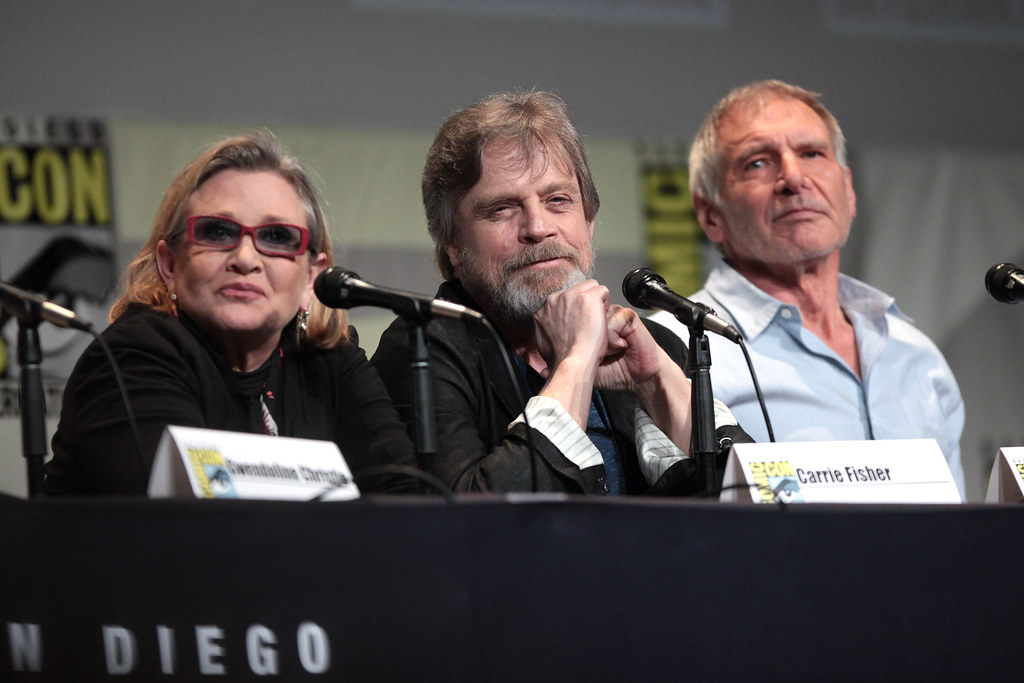
10. **Television Triumphs and Final Franchise Bows**
The turn of the 2020s saw Harrison Ford embracing the small screen with a vigor that belied his decades-long cinematic career, delivering performances that captivated new audiences and earned him significant acclaim. In 2022, he took on a leading role alongside Helen Mirren in the Paramount+ western drama series *1923*, a collaboration that reunited the pair 36 years after their work on *The Mosquito Coast*. The series premiered to overwhelmingly positive reviews, quickly establishing itself as a compelling narrative within the Yellowstone universe and is slated for a total of two seasons.
Simultaneously, Ford ventured into comedy with the Apple TV+ series *Shrinking*, which premiered in January 2023. His performance in the comedy-drama was widely praised, demonstrating his nuanced comedic timing and dramatic depth. In a revealing 2023 interview with *The Hollywood Reporter*, Ford shared a fascinating insight into his commitment, stating that he accepted both the *1923* and *Shrinking* roles despite there not being fully developed scripts at the time, a testament to his trust in compelling concepts and creative teams.
These television roles swiftly brought Ford a new wave of recognition and a slew of prestigious nominations. For his exceptional work, he received a Golden Globe nomination for Best Supporting Actor, a Critics’ Choice Television Award for Best Supporting Actor in a Comedy Series, and his first-ever Screen Actors Guild Award for Outstanding Performance by a Male Actor in a Comedy Series. This was further topped by his inaugural Emmy Award nomination for Outstanding Supporting Actor in a Comedy Series, underscoring the profound impact of his return to television.
In 2023, Ford made another significant return to the big screen, reprising his iconic role as Indiana Jones in *Indiana Jones and the Dial of Destiny*. This film, which Ford has stated will be his last appearance as the character, was met with generally positive reviews, with many critics specifically highlighting his powerful and poignant performance, bringing a resonant closure to an unparalleled cinematic journey.
Looking ahead, Ford is set to join the Marvel Cinematic Universe in February 2025, portraying Thaddeus Ross in *Captain America: Brave New World*, a role he takes over following the passing of William Hurt. Moreover, Ford has also made his voice heard on emerging industry issues, notably speaking out against the use of artificial intelligence in video games and voicing support for Troy Baker, who plays Indiana Jones in the video game *Indiana Jones and the Great Circle*, signaling his advocacy for human artistry in an evolving digital landscape.
Read more about: The Unseen Chapters: 14 Celebrity Memoirs Offering Unfiltered Insights Worth Reading This Year
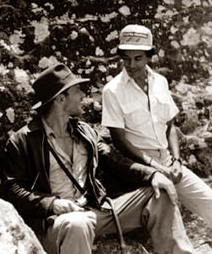
11. **The Private Life of a Public Figure: Family and Philosophy**
Despite decades in the relentless glare of Hollywood’s spotlight, Harrison Ford has cultivated a fiercely private personal life, a characteristic that has only added to his enigmatic appeal. He has been married three times, first to Mary Marquardt from 1964 to 1979, with whom he had two sons. His second marriage was to screenwriter Melissa Mathison from 1983 to 2000, and they shared a son and a daughter before their divorce in 2004. Mathison, a celebrated talent in her own right, passed away in 2015.
Ford’s children have carved their own paths, with his older biological son co-owning Ford’s Filling Station, a gastropub at Los Angeles International Airport. His younger biological son has ventured into the fashion industry as the owner of Ludwig Clothing company, and previously owned the Strong Sports Gym and the Kim Sing Theater, demonstrating an entrepreneurial spirit that perhaps echoes his father’s own pragmatic approach to life before acting.
Ford’s most recent marriage is to actress Calista Flockhart. They met at the 2002 Golden Globe Awards, and after several years of dating, Ford proposed on Valentine’s Day weekend in 2009. They married on June 15, 2010, in Santa Fe, New Mexico, while Ford was filming *Cowboys & Aliens*. Flockhart had adopted a son in 2001 before meeting Ford, and he became a cherished part of their family. The couple primarily resides on an expansive 800-acre ranch in Jackson, Wyoming, where Ford has lived since the 1980s, notably donating approximately half of the land as a nature reserve, reflecting his deep commitment to environmental preservation. They also maintain a base in the Brentwood neighborhood of Los Angeles.
Ford is widely recognized as “one of Hollywood’s most private actors,” often guarding the details of his personal life with a quiet resolve. While fans have sometimes speculated about him having social anxiety disorder, Ford directly addressed these conjectures in a 2023 interview, offering a characteristically dry and insightful clarification: he instead has “an abhorrence of boring situations.” This candid remark provides a rare glimpse into the mindset of a man who has consistently prioritized substance over superficiality. It is also a well-documented anecdote that Carrie Fisher, in her 2016 autobiography *The Princess Diarist*, recounted a three-month affair with Ford in 1976 during the filming of *Star Wars*, a revelation that briefly lifted the veil on their professional and personal chemistry.
Read more about: Beyond the Veil: 14 Influential Figures Who Were Secretly Freemasons
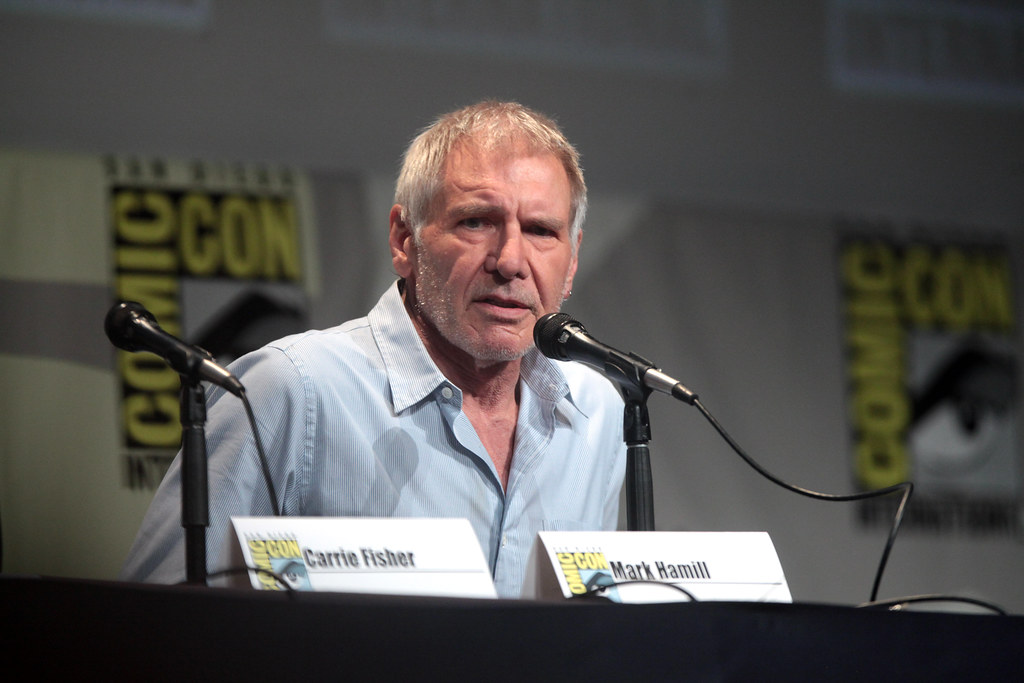
12. **Aviation Enthusiast: A Pilot’s Passion and Heroics**
Beyond the silver screen, Harrison Ford nurtures a profound passion for aviation, not merely as a hobbyist but as an accomplished, licensed pilot of both fixed-wing aircraft and helicopters. His skills in the air have extended beyond personal enjoyment, as he has repeatedly leveraged his abilities to assist emergency services in rescue missions near his Wyoming home. In a notable instance in 2000, he airlifted an EMT to a 20-year-old hiker suffering from dehydration on Table Mountain. The following year, his helicopter was famously flagged down by a lost 13-year-old Boy Scout near Yellowstone National Park, showcasing his dedication to community safety.
Ford’s journey into flight began much earlier, in the 1960s, at Wild Rose Idlewild Airport in Wisconsin, flying a Piper PA-22 Tri-Pacer. However, at a cost of $15 an hour, equivalent to $156 in 2024, he found he could not afford to continue the training. His dream was rekindled in the mid-1990s when he purchased a used Gulfstream II and sought lessons from one of his own pilots, Terry Bender. They began with a Cessna 182 Skylane out of Jackson, Wyoming, later progressing to a Cessna 206 at Teterboro Airport in New Jersey, where Ford achieved his first solo flight, a momentous milestone in his personal pursuit.
His Bell 407 helicopter, often hangared at his Jackson ranch, has been instrumental in two mountain rescues during his assigned duty time with Teton County Search and Rescue. One particularly memorable rescue involved a lost and disoriented hiker who, upon boarding his helicopter, promptly vomited into one of the rescuers’ caps, utterly unaware that the pilot was Harrison Ford until much later, humorously exclaiming, “I can’t believe I barfed in Harrison Ford’s helicopter!” Such anecdotes underscore the often-unassuming nature of his heroic deeds.
Among his fleet of aircraft, Ford expresses a particular fondness for his de Havilland Canada DHC-2 Beaver, bearing the registration N28S, which he flies more than any of his other planes. He has repeatedly praised this aircraft and the distinctive sound of its Pratt & Whitney R-985 radial engine. Intriguingly, Ford has shared that this particular Beaver had a history with the CIA’s Air America operations and was, in his words, “riddled with bullet holes that had to be patched up,” adding a layer of adventurous provenance to his cherished plane.
Ford’s commitment to aviation extends to advocacy and education. In March 2004, he took on the role of chairman for the Experimental Aircraft Association (EAA)’s Young Eagles program, founded by Tom Poberezny and Cliff Robertson, stepping in for General Chuck Yeager. He embraced the position, making numerous appearances at the EAA AirVenture Oshkosh gathering and personally flying over 280 children as part of the program, often in his DHC-2 Beaver. Though he stepped down as chairman in 2009, he remains actively involved with the EAA chapter in Driggs, Idaho, and notably flew the two millionth Young Eagle in 2016, marking a historic achievement for the youth aviation introduction program.
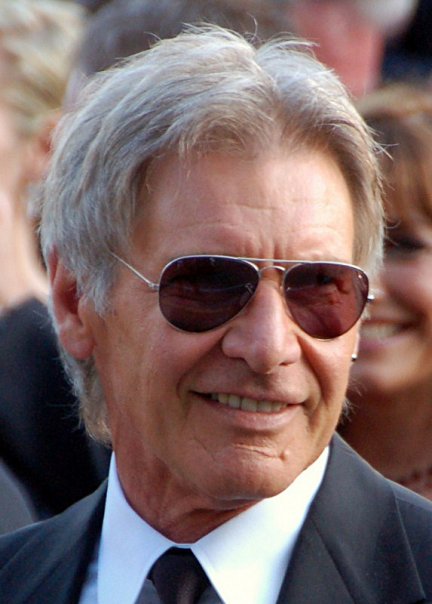
13. **Incidents in the Air: A History of Close Calls**
Even for a seasoned and passionate pilot like Harrison Ford, the skies have, on occasion, presented moments of peril and unexpected challenges, leading to a series of well-documented aviation incidents throughout his flying career. The first publicly known event occurred on August 22, 1987, when Ford was a passenger aboard a Gulfstream III with Clint Eastwood and Sondra Locke. During a Paris-to-Los Angeles flight, the jet experienced an engine fire and stuck landing gear, forcing an emergency landing in Bangor, Maine, a harrowing experience shared with fellow Hollywood luminaries.
More than a decade later, on October 23, 1999, Ford was directly involved in a helicopter crash while piloting a Bell 206L4 LongRanger over the Lake Piru riverbed near Santa Clarita, California. The NTSB accident report detailed that during a routine training flight, Ford was making his second attempt at an autorotation with powered recovery when the aircraft lost power after a sudden drop in altitude. It landed hard, skidded in loose gravel, and ultimately flipped onto its side. Miraculously, neither Ford nor his instructor pilot sustained any injuries, although the helicopter was severely damaged.
Another significant incident transpired on March 5, 2015, when Ford’s plane, believed to be a Ryan PT-22 Recruit, experienced engine power loss and made an emergency landing on the Penmar Golf Course in Venice, California. He was transported to Ronald Reagan UCLA Medical Center, where he was reported to be in fair to moderate condition. The accident resulted in substantial injuries for Ford, including a broken pelvis and broken ankle, along with other physical trauma, requiring a period of recovery and rehabilitation.
Two years later, on February 13, 2017, Ford was involved in a less severe but notable incident at John Wayne Airport in Orange County, California. While piloting an Aviat Husky, he landed on a taxiway situated to the left of runway 20L. At the time, a Boeing 737 was holding short of the runway on the same taxiway, raising concerns about potential proximity. The event underscored the critical importance of strict adherence to air traffic control directives.
The most recent publicly reported incident occurred on April 24, 2020, at the Los Angeles Hawthorne Airport. Again piloting his Husky, Ford crossed a runway where another aircraft was in the process of landing. According to the Federal Aviation Administration (FAA), the two planes were approximately 3,600 feet apart, and no immediate danger of collision was determined. A representative for Ford later clarified that he had “misheard” an instruction given to him by air traffic control, highlighting the complex and high-stakes nature of aviation communication, even for the most experienced pilots.
Read more about: Unmasking History’s Grand Deceptions: 14 Shocking Events Once Dismissed as Mere Hoaxes
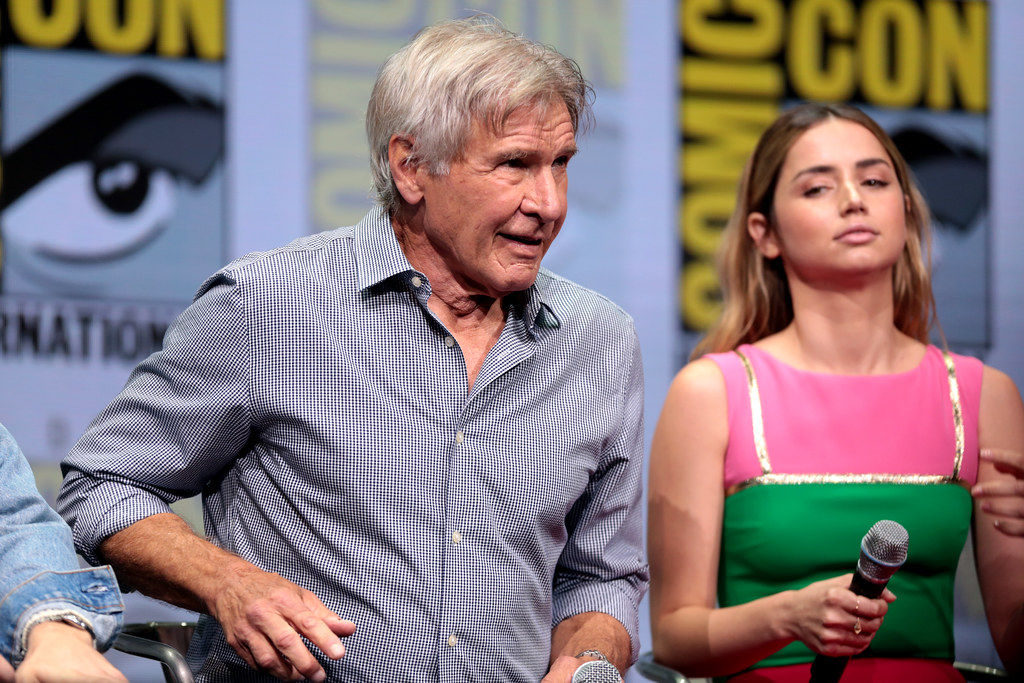
14. **Environmental and Political Activism: A Voice for Change**
Beyond his celebrated acting career and passion for aviation, Harrison Ford has long been a powerful and unwavering voice in environmental and political activism, dedicating substantial time and influence to causes he deeply believes in. Since 1991, he has served as the inaugural vice-chair of Conservation International, an American nonprofit environmental organization committed to protecting nature globally. His commitment extends to public awareness campaigns, lending his voice to EarthShare public service messages promoting environmental involvement since 1992, and acting as a spokesperson for Restore Hetch Hetchy, advocating for the restoration of Yosemite National Park’s Hetch Hetchy Valley. He has also appeared in the documentary series *Years of Living Dangerously*, highlighting the human impact of climate change.
His significant contributions to conservation have even been immortalized in the scientific community. The arachnologist Norman Platnick named a new species of spider, *Calponia harrisonfordi*, in his honor in 1993. This was followed in 2002 by the entomologist Edward O. Wilson, who named an ant species, *Pheidole harrisonfordi*, recognizing Ford’s extensive work with Conservation International. Most recently, in 2023, the Peruvian snake species *Tachymenoides harrisonfordi* was named for him, a unique tribute reflecting his enduring legacy in the environmental sphere.
Ford’s activism, however, has not been without controversy. In September 2013, while filming an environmental documentary in Indonesia, his interview with the Indonesian Forestry Minister, Zulkifli Hasan, led to accusations of “harassing state institutions” and public threats of deportation. The questions focused on the Tesso Nilo National Park and the challenges of illegal logging, prompting Ford to later secure an audience with Indonesian President Susilo Bambang Yudhoyono to express his concerns regarding Indonesia’s environmental degradation and the government’s efforts to address climate change. The President, in turn, outlined Indonesia’s commitment to preserving its oceans and forests.
His impassioned advocacy reached a global stage in 2019 when, on behalf of Conservation International, Ford delivered a powerful speech during the United Nations’ Climate Action Summit in New York. His address centered on the destruction of the Amazon rainforest and its profound effect on global climate change. In a stirring call to action, Ford urged his audience to listen to “angry young people” striving to make a difference, emphasizing, “The most important thing we can do for them is to get the hell out of their way,” highlighting his belief in empowering the next generation of environmental leaders.
Politically, Ford is a lifelong Democrat, a stance he inherited from his parents. His activism has spanned various social and political issues, including his powerful testimony before the U.S. Senate Foreign Relations Committee in 1995 in support of the Dalai Lama and an independent Tibet, further demonstrating his commitment to human rights. He later narrated the documentary *Dalai Lama Renaissance* in 2007, amplifying the message.
Ford has also engaged in more direct political endorsements and criticisms. In 2003, he publicly condemned the Iraq War, calling for “regime change” in the United States, and voiced concerns about Hollywood’s focus on “video games than stories about human life and relationships,” alongside advocating for stricter gun control. More recently, he became a prominent critic of Donald Trump’s presidency, particularly responding to Trump’s admiration for his role in *Air Force One* by stating it was “just a film.” He subsequently endorsed Joe Biden’s 2020 presidential campaign, explaining his desire to “encourage people to support candidates that will support the environment,” lamenting that under Trump, the U.S. had “lost some of our credibility in the world.” He even collaborated with the anti-Trump Republican group The Lincoln Project on a 2020 election ad and endorsed Kamala Harris’s 2024 presidential campaign, consistently using his platform to champion progressive causes.
Read more about: Billie Eilish Unfiltered: The Authentic Journey of a Global Icon, From Indie Roots to Cultural Phenomenon
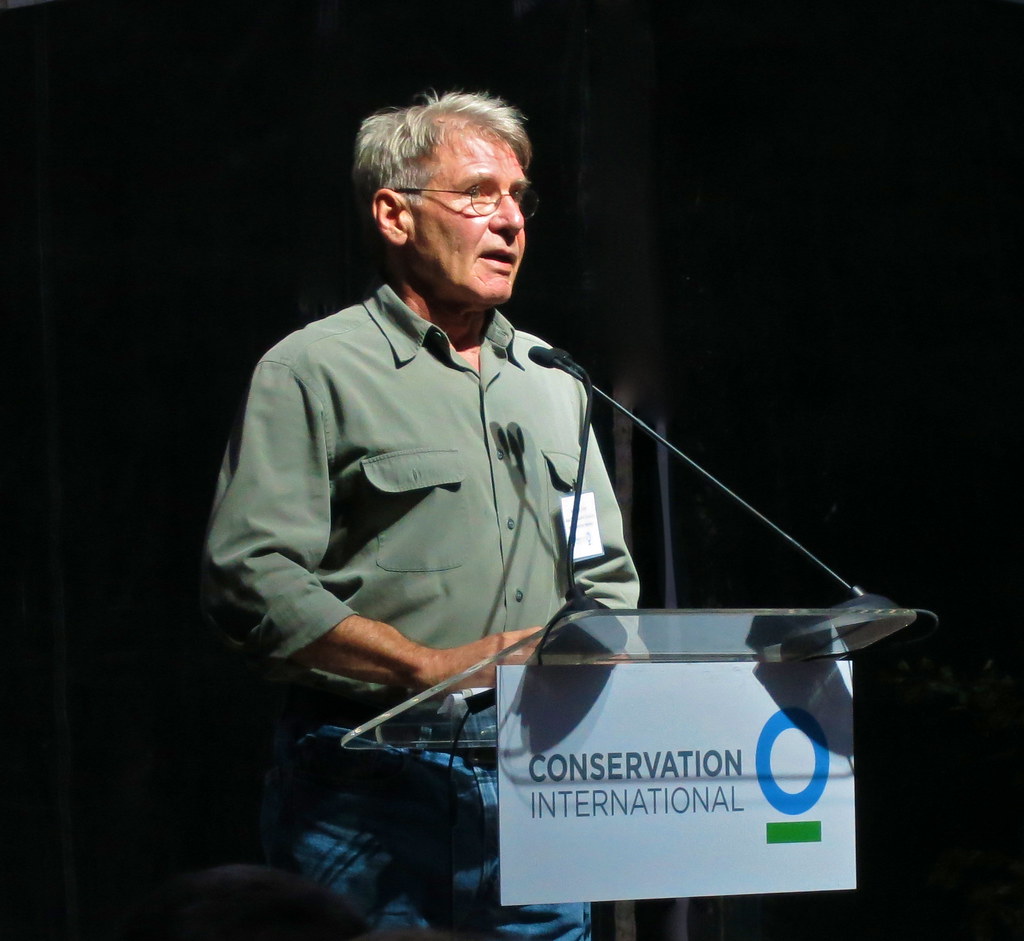
15. **Enduring Legacy: Accolades, Cultural Impact, and Future**
Harrison Ford’s influence extends beyond his captivating performances and dedicated activism into the realm of cultural preservation and academic support. Building on his iconic portrayal of the archaeologist Indiana Jones, Ford actively supports the work of professional archaeologists. He serves as a General Trustee on the Governing Board of the Archaeological Institute of America (AIA), North America’s oldest and largest organization devoted to archaeology. In this capacity, he assists them in their crucial mission of increasing public awareness of archaeology and combating the illegal antiquities trade, ensuring that his on-screen persona has a real-world impact.
Throughout his illustrious career, Ford has garnered a staggering array of accolades that reflect his profound impact on the entertainment industry. In 1986, his powerful performance in *Witness* earned him his sole Academy Award nomination for Best Actor, alongside BAFTA and Golden Globe nominations in the same category. His dramatic range was further recognized with three additional Golden Globe nominations for *The Mosquito Coast* (1987), *The Fugitive* (1994), and *Sabrina* (1996), underscoring his consistent excellence across diverse genres.
Beyond competitive awards, Ford has been honored with numerous lifetime achievement and career recognition awards. In 2000, he received the prestigious AFI Life Achievement Award from the American Film Institute, presented by his long-time collaborators and fellow industry giants, George Lucas and Steven Spielberg, a testament to their enduring creative partnership and his monumental body of work. This was followed by the Cecil B. DeMille Award in 2002 from the Hollywood Foreign Press Association, a signal of his unparalleled impact on global cinema. On May 30, 2003, his enduring presence in Hollywood was physically immortalized with a star on the Hollywood Walk of Fame.
Other significant honors include the Jules Verne Award in 2006, given to an actor who has “encouraged the spirit of adventure and imagination” throughout their career—a fitting tribute to the man who gave the world Indiana Jones. He received the first-ever Hero Award at the 2007 Scream Awards for his iconic roles, particularly Indiana Jones and Han Solo, which collectively earned him three Saturn Awards for Best Actor across different years. In 2008, he was honored with Spike TV’s Guy’s Choice Award for “Brass Balls,” recognizing his rugged screen persona. Later, in 2015, BAFTA Los Angeles bestowed upon him the Albert R. Broccoli Britannia Award for Worldwide Contribution to Entertainment, acknowledging his global cinematic influence.
Read more about: Clint Eastwood at 95: A Lifetime of Cinematic Grit, Unyielding Glory, and an Enduring Legacy
His humanitarian efforts have also been recognized by industry peers; in 2018, the SAG-AFTRA Foundation presented him with the Artists Inspiration Award, celebrating both his acting and his philanthropic work, particularly his leadership and dedication to Conservation International. Further cementing his international and cultural standing, Ford has received an Honorary César, an Honorary Palme d’Or, and was notably honored as a Disney Legend in 2024. From the accidental carpenter to an indispensable cultural icon, Harrison Ford’s journey is a masterclass in resilience, talent, and authentic engagement, leaving an indelible mark on cinema, public discourse, and the very fabric of popular culture for generations to come.


